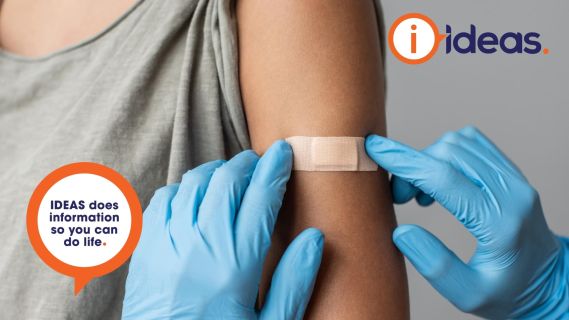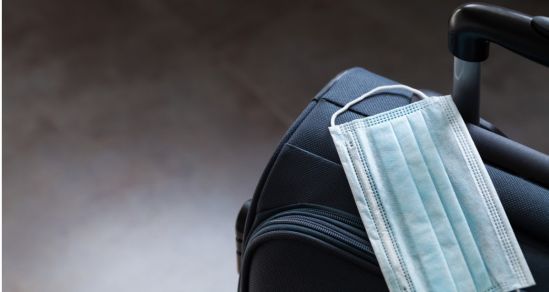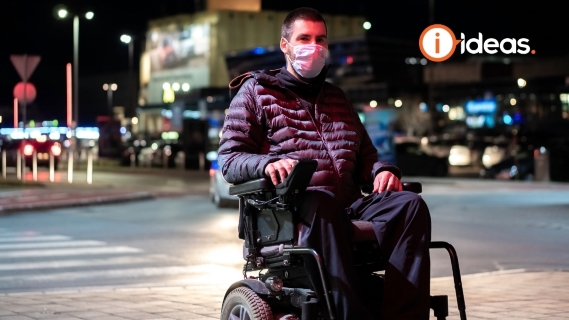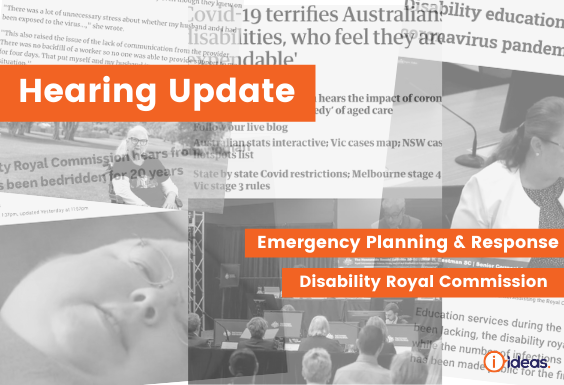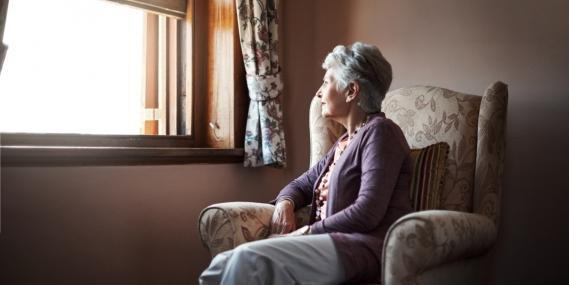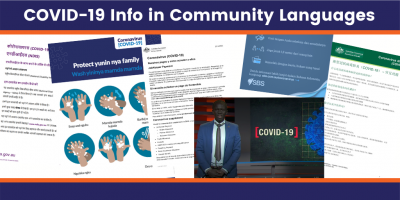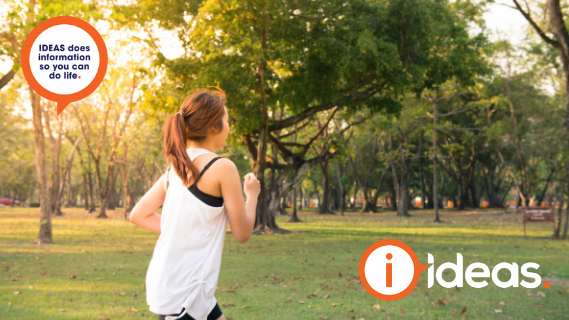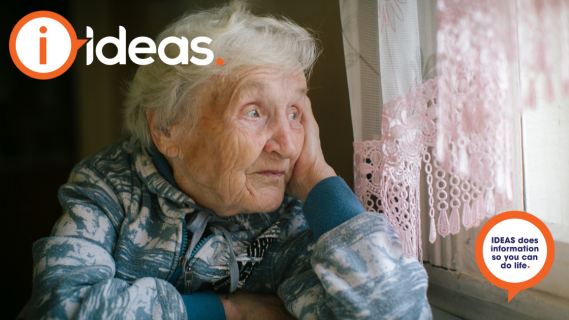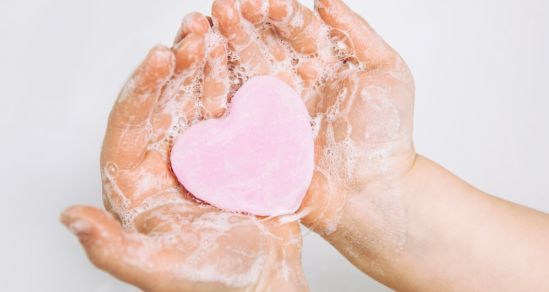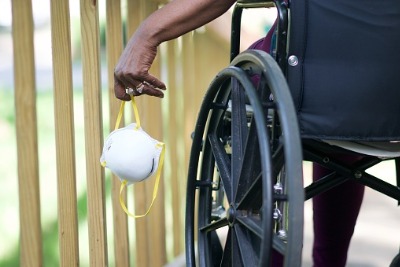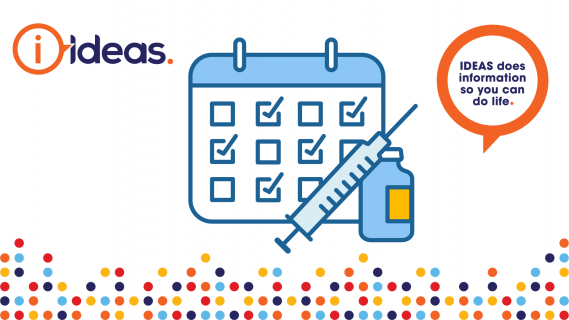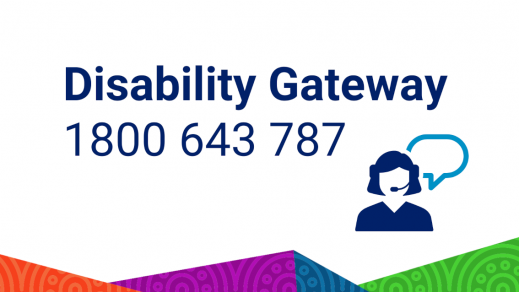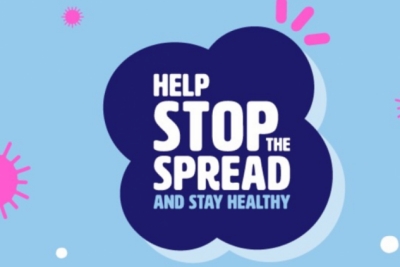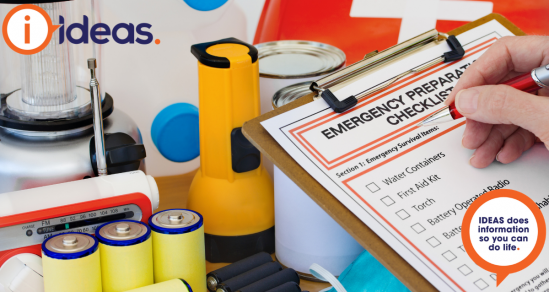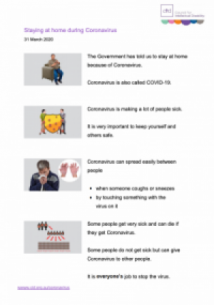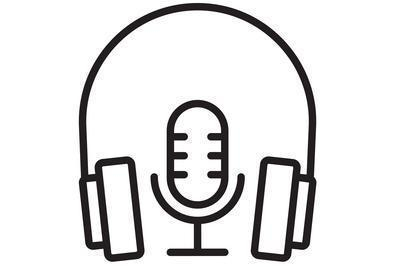Masks are considered a tool to protect ourselves and each other from Coronavirus. We try and bring together all the info you need about masks in one place. Communication needs, Autism and Masks, fogging, making, wearing and washing face masks; and the lawful reasons that masks are not needed.
The latest mask-wearing requirements can be found on the appropriate state and territory government websites, which you can access by following the links below:
- New South Wales
- Queensland
- South Australia
- Tasmania
- Victoria
- Western Australia
- Australian Capital Territory
- Northern Territory
Quick links:
Easy Read and Easy English | Should I wear a mask? | Videos in Community Languages | Autism and masks | Communication needs | Glasses and fogging | How to wash masks | Masks and Vaccination | Lawful reasons for not wearing a mask | What to do if you’re refused access or service and want to make a complaint under the Disability Discrimination Act |
Also: Making a mask | How to wear a mask
Should I wear a mask?
Easy Read and Easy English
- How to wear a mask PDF Document From Access Easy English
 Face coverings - FAQ for people with disability and their care workers. Word Document From VIC DHHS
Face coverings - FAQ for people with disability and their care workers. Word Document From VIC DHHS Answers to your questions about masks for people with disability PDF From VIC DHHS
Answers to your questions about masks for people with disability PDF From VIC DHHS Answers to your questions about masks for your support workers PDF From VIC DHHS
Answers to your questions about masks for your support workers PDF From VIC DHHS Should you wear a mask? PDF Document From the Australian Government
Should you wear a mask? PDF Document From the Australian Government Should you wear a mask? Word Document From the Australian Government
Should you wear a mask? Word Document From the Australian Government
IDEAS encourages people to print and share Easy English and Easy Read information with people who may not have access to the internet.
Videos in Community Languages (Victoria)
Videos in 16 different community languages from the Victorian Department of Health and Human Services are available. View them here and please share them with anyone who would benefit from them.
Autism Spectrum Disorder (ASD) and Masks
Harvard Medical Publishing has tips about Helping people with autism spectrum disorder manage masks and COVID-19 tests. It outlines challenges and suggestions for what to do in each situation.
IDEAS has heard of parents helping children work with their sensory needs, by offering fabric masks in materials or colours/ designs that the children enjoy.
Other great tips include if the person does not like having the elastic around their ears, sew two buttons on their favourite hat and loop the elastic over the buttons. Or do the same with a headband. Rather than rest on the ears, this can add space between the ear and the elastic. They can wear their hat if they need to leave the house.
Graphics you can use to help tell a story, produced by WHO can be downloaded here.
Communication Needs and Masks
Some people need to use masks with clear sections so that they can communicate with people who need to see facial expressions and lip read. Masks can also be lowered to show facial expressions - if people remain 1.5m apart from each other. Using paper and pen, or a mobile device may also be an alternative means of communication. If you download a speech to text app you can still communicate with people who cannot see your mouth.
Expressions Australia has developed a toolkit with images that you can save on your device to help you communicate with people wearing masks.
If you wear a hearing aid, take care when putting on or taking off your face mask to ensure you don’t lose your hearing aid or get your face mask tangled in it. Consider using a face mask that ties around the head, rather than over the ears as this will keep the ties free from your hearing aid.
If you are having trouble communicating with someone who is wearing a face mask you can ask them to speak louder or to remove their mask during your conversation. You should maintain physical distancing of at least 1.5 metres from others.
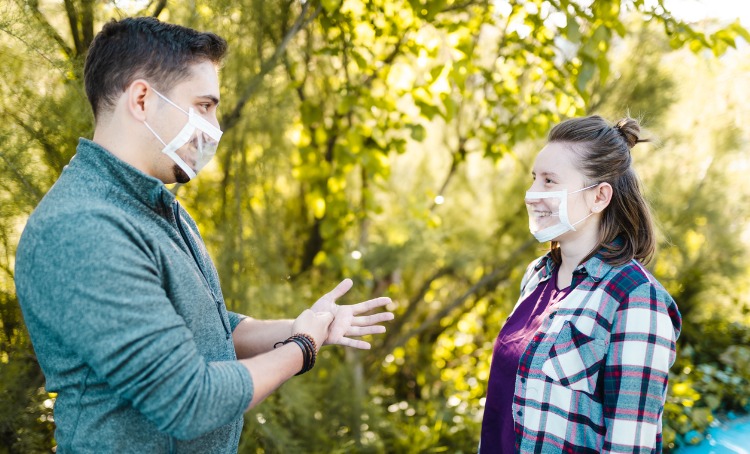
Glasses and fogging
A combination of warm air when breathing out, outside cooler air temperatures, wearing glasses and adding a mask equal foggy glasses. Getting as good a seal as possible at the top opening of your mask across the bridge of your nose and under your eyes is the best way to prevent warm air from channelling up behind your lenses and causing condensation and fogging.
A few tips from us:
- Disposable masks usually have a mouldable ridge which can help you better shape the mask around your nose and help you achieve a better seal.
- Some health professionals have had varying success with medical tape over the mask and bridge of the nose or folded tissues inside the mask.
- Anti-fog spray or wipes for glasses may also assist and can usually be found at chemists or optometrists.
This article from The Conversation is a great resource and may help you further.
Where can I get a mask?
Locally, your chemist, pharmacy, some corner stores or convenience stores, some clothing retailers, hardware stores, or you may find a charity group or sewing group is selling them. Some chemists have online orders or telephone orders available.
Your service provider may be able to help you with supplies of masks too. Masks can also be purchased online. Just be careful that when you are buying them, they are either approved surgical masks (that meet the Australian Standard) or they are cloth masks with three layers.
How to wash a fabric mask
Re-usable masks should be washed frequently in warm-hot water over 60°C, with soap or laundry detergent, or, wash using room temperature water then boil the mask for one minute. See more about washing masks at the Centre for Disease Prevention. Black fungus cases rose in India during the pandemic, linked partly to poor mask hygiene.
Lawful reasons or exceptions for not wearing a face covering
Face covering is NOT required in the following circumstances:
- Infants and children under the age of 12 years.
- A person who is affected by a relevant medical condition - including problems with their breathing, a serious skin condition on the face, a disability or a mental health condition.
- This includes persons who are communicating with a person who is hearing impaired, where the ability to see the mouth is essential for communication.
- Persons for whom wearing a face covering would create a risk to that person’s health and safety, related to their work, as determined through OH&S guidelines.
- Persons whose professions need clear enunciation or visibility of their mouth. This includes teaching or live broadcasting.
- Professional sportspeople when training or competing.
- When the individual is doing any exercise or physical activity where they are out of breath or puffing; examples include jogging or running but not walking. You must have a face covering on you and wear it when you finish exercising.
- When directed by police to remove the face covering to check identity.
- The person is travelling in a vehicle by themselves or with other members of their household.
- When consuming food, drink, medication or when smoking/vaping.
- When undergoing dental treatment or other medical care to the extent that the procedure requires that no face covering may be worn.
- When entering or inside a financial institution, like a bank.
- During emergencies.
Proof of exemption for not wearing a mask - NSW
If you cannot wear a face mask because of a disability, physical or mental health illness or condition, you must carry a medical certificate or letter signed by a registered health practitioner (such as a doctor) or a registered NDIS provider or a statutory declaration.
Proof of exemption and identity
If you are in a situation where masks are mandatory, a regulatory officer can ask you to confirm the lawful reason you are not wearing a face mask.
If asked by a police officer, you must show them either a medical certificate or letter from the health practitioner or NDIS provider or a statutory declaration.
You must also carry and produce evidence of your name and address to a police officer if requested.
A statutory declaration will require you to identify your disability, physical or mental health illness or condition and declare you have the physical or mental health illness or condition or disability and the physical or mental health illness or condition, or disability makes wearing a fitted face-covering unsuitable.
Penalty notices
Officers can issue a penalty notice if you clearly refuse to wear a mask without a lawful reason.
Visit NSW Face mask rules for more information on face mask rules.
What to do if you’re refused access or service and want to make a complaint under the Disability Discrimination Act
If you are refused access or service and want to make a discrimination complaint against a shop owner or service provider under the DDA, you will need to show that there is a clear link between your medical condition or disability and your inability to wear a face mask.
Note: If you are not sure about whether you have a sufficiently clear link or a lawful excuse, it is best to seek advice from your medical practitioner.
If you do not have a medical condition or disability that affects your ability to wear a face mask and are refused entry or service by a shop owner or service provider because you are not wearing a mask, the refusal of entry or service will not be disability discrimination. For more information see Face masks and federal discrimination law.
Even if you have had both doses of the COVID-19 vaccines, vaccination status does not affect compliance with government-imposed restrictions in Australia. Vaccines are not a guarantee that you will not catch COVID-19 or then transmit it to others. Masks are a tool for protection, for yourself and others.
Making a mask
The Hearing, Speech and Deaf Centre have shared a guide on how to make an Accessible, Deaf Friendly Face Mask. This includes a clear section of the mask so that lip reading and facial expressions can still be seen.
PDF Version for Download ![]() Design and Preparation of cloth mask IDEAS have requested this document in accessible formats. We endeavour to provide them here, so watch this space.
Design and Preparation of cloth mask IDEAS have requested this document in accessible formats. We endeavour to provide them here, so watch this space.
A video version, from The Social Studio, is recommended by DHHS.


